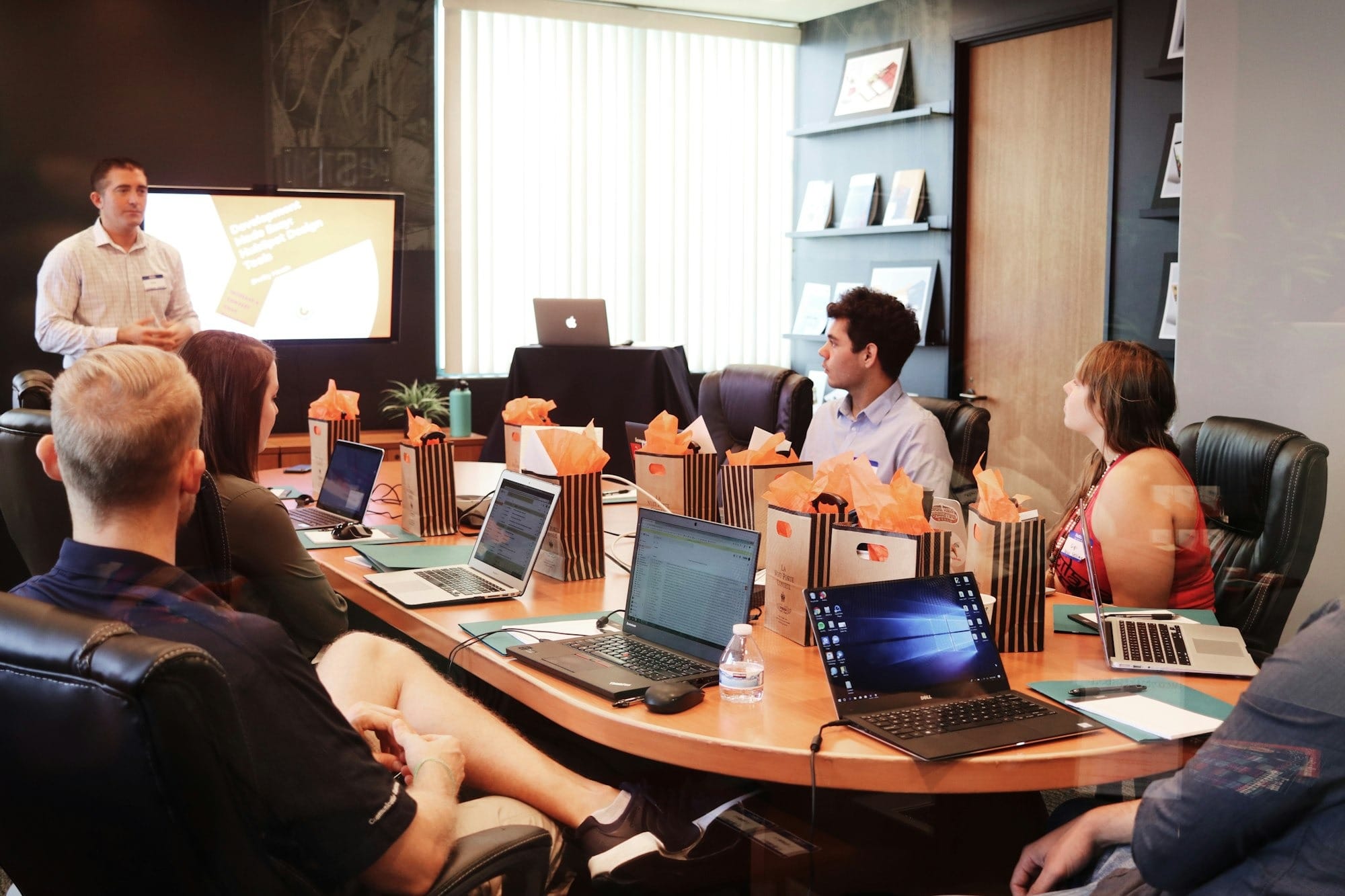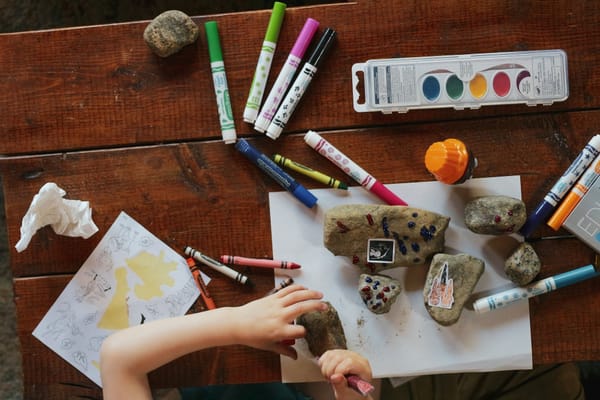Embracing Authenticity: Creating Meaningful Connections in Online Learning
In online education, a learner-centered model shifts power dynamics, making students active participants. Educators facilitate with engaging activities and open-ended questions. Tailoring sessions to participants' interests and being flexible enhances the learning experience.

In today's digital landscape, the term "authenticity" seems to be everywhere. But what does it truly mean to be authentic, especially in the context of online learning? To many, it may simply mean being genuine or honest. However, authenticity carries a more complex weight for someone like me—a Latina immigrant for whom English is a second language.
Would appearing as my true self while facilitating a course would be appropriate?
As I reflect on my identity and values, particularly my progressive ideals surrounding social justice, I often wonder how these aspects play out in online educational settings. Would appearing as my true self while facilitating a course would be appropriate? Picture this: I'm wearing vibrant ethnic earrings and a multicolored blouse, laughing heartily, referencing my beloved Spanish soap operas, and perhaps even playing some salsa music in the background. Would that enhance the learning experience or be seen as too informal? The answer, I realize, heavily depends on the context. In a traditional academic setting, such expressions might clash with established norms. Yet, that authenticity could resonate deeply with participants in a more relaxed environment focused on professional development or personal growth.
In her insightful article on fostering authentic relationships in the transformative classroom, Patricia Cranston highlights five critical elements of authentic teaching. These principles challenge us to explore who we are—both as educators and individuals—while nurturing relationships that allow for genuine connections. Being aware of our teaching context, reflecting on our practices, and understanding our learners' diverse backgrounds ultimately create a rich tapestry of learning that honors both the facilitator's and participants' identities.
In my journey through the non-profit sector and my experiences facilitating both online and in-person learning spaces, I've come to appreciate the profound impact of authentic communication. Being genuine means embracing vulnerability—sharing pieces of our personal stories not only helps build trust but also fosters inclusivity. A colleague recently described my facilitation style as "disarming," noting that when I incorporate my personal experiences to illustrate key points, it significantly lowers defensiveness and ignites deeper reflection among participants. This made me ponder: what triggers defensiveness in a learning environment, and how does it contribute to disengagement? As naturally curious beings, we instinctively question information that doesn't resonate with our lived experiences. When faced with ideas that contradict our beliefs, our immediate reaction is often one of skepticism, leading to a disengaged mindset and diminished trust in the instructor. Ultimately, it's this delicate balance of vulnerability and authenticity that creates a safe space for meaningful learning and connection.
For the remainder of this blog, I'd like to share some practical examples from my professional experience that have helped me create dynamic learning environments.

3 Essential Tips to Foster Authentic Online Learning Experiences
- Create a Safe Sharing Space
One of the most impactful ways to start any session is by allowing participants to share their personal journeys. Imagine kicking off your workshop with an engaging introductory activity! I love asking participants to take about five minutes to create an online collage or timeline showcasing key moments in their lives. This could include photos, meaningful quotes, or anything that represents significant experiences that have led them to this very moment. After they've crafted their collages, it's time for some real connection. I pair up participants in breakout rooms, giving them about 7-10 minutes each to share their timelines. This is where the magic happens! Not only do they get to share their journey with a partner, but they also build a sense of camaraderie and trust. When we come back to the larger group, I encourage everyone to share highlights or surprising elements from their partner's story. Personally, I like to model this by sharing my own journey first, which helps to set the tone for vulnerability and authenticity.
- Group Agreements: Fostering Trust and Meaningful Conversations
For the past four years, I've been harnessing the power of group agreements to facilitate dynamic discussions, whether in large meetings or intimate gatherings. At the heart of this practice is the commitment to establish trust and strengthen relationships among participants. These agreements, originally developed by Glenn Singleton, M.Ed. at Stanford University, empower adults to engage in courageous conversations about challenging topics such as race, racism, ethnicity, and privilege.
Through my experiences—both professional and personal—I've come to recognize that issues of race, gender, and various forms of systemic inequality are always present in all conversations, and learning spaces often surfacing either implicitly or explicitly.
Through my experiences—both professional and personal—I've come to recognize that issues of race, gender, and various forms of systemic inequality are always present in all conversations, and learning spaces often surfacing either implicitly or explicitly. This reality becomes even more pronounced in educational settings. As facilitators and educators, we must create the right conditions for these important topics to be openly acknowledged. When we do, we pave the way for rich, experience-driven dialogue that enhances the group's collective learning.
Group agreements play a crucial role in crafting inclusive learning spaces where individuals from diverse backgrounds can engage fully and contribute to a broader understanding. Although these agreements were initially designed to create a safe space for discussions about race, I've found them invaluable in fostering safety across all types of interactions, both virtual and in-person.
I currently use this Group Agreements: Stay Engaged, Listen to Understand, Speak Your Truth Responsibly, Expect and Accept Non-Closure, Experience Discomfort, and Maintain Confidentiality. Here is a great video that outlines how these agreements can be used as a facilitator/educator:
These agreements are more than just guidelines; they're the foundation that supports meaningful conversations and promotes deeper connections among individuals. By embracing these practices, we can enrich our learning experiences and create a culture of respect and understanding.
- Follow a Learner-Centered Model
Following a learner-centered model in online learning spaces significantly alters the power dynamics traditionally seen in education. In conventional settings, instructors are often viewed as the sole bearers of knowledge while students passively absorb information. However, when we center adult learning, we acknowledge that every participant brings valuable lived experiences and professional insights that enhance collective learning. One effective approach is to set up registration pages where participants share their interests and goals for the session. This helps educators tailor the workshop to center around the curiosity and aspirations of the group, creating a more engaging and relevant learning experience. Instead of asking a straightforward question like, "What is the capital of France?", we can encourage deeper discussion with queries like, "What do you think makes Paris a unique city?"
Facilitators must be prepared to disrupt their carefully crafted agendas and instructional plans to respond to the dynamics emerging from participants.
Another crucial aspect of cultivating this engaging environment is the ability to read and adapt to the room's energy. Facilitators must be prepared to disrupt their carefully crafted agendas and instructional plans to respond to the dynamics emerging from participants. This requires a commitment to letting go of control and creating space for real-time feedback and dialogue. While thorough planning is essential, leaving room for spontaneity and discussion is equally important. When a learning space prioritizes conversation over rigid schedules, it opens the door to richer interactions and fosters a sense of community among participants. Implementing these strategies not only enhances engagement but also transforms the learning experience into a collective journey of discovery.
I invite you to try these tips in your own online learning spaces and see the impact they can have on engagement and connection. By being intentional about fostering authenticity and building relationships, we can create environments that truly empower learners and transform their educational experiences. I would love to hear how these approaches work for you—please share your stories and reflections on how they’ve shaped your online learning environments!




